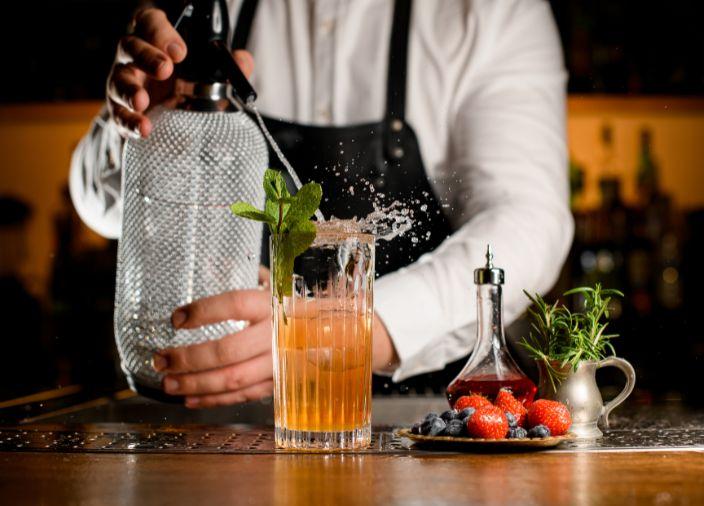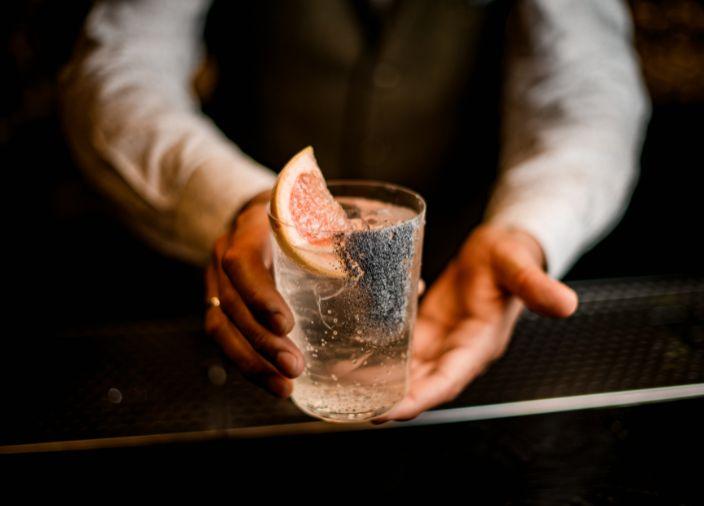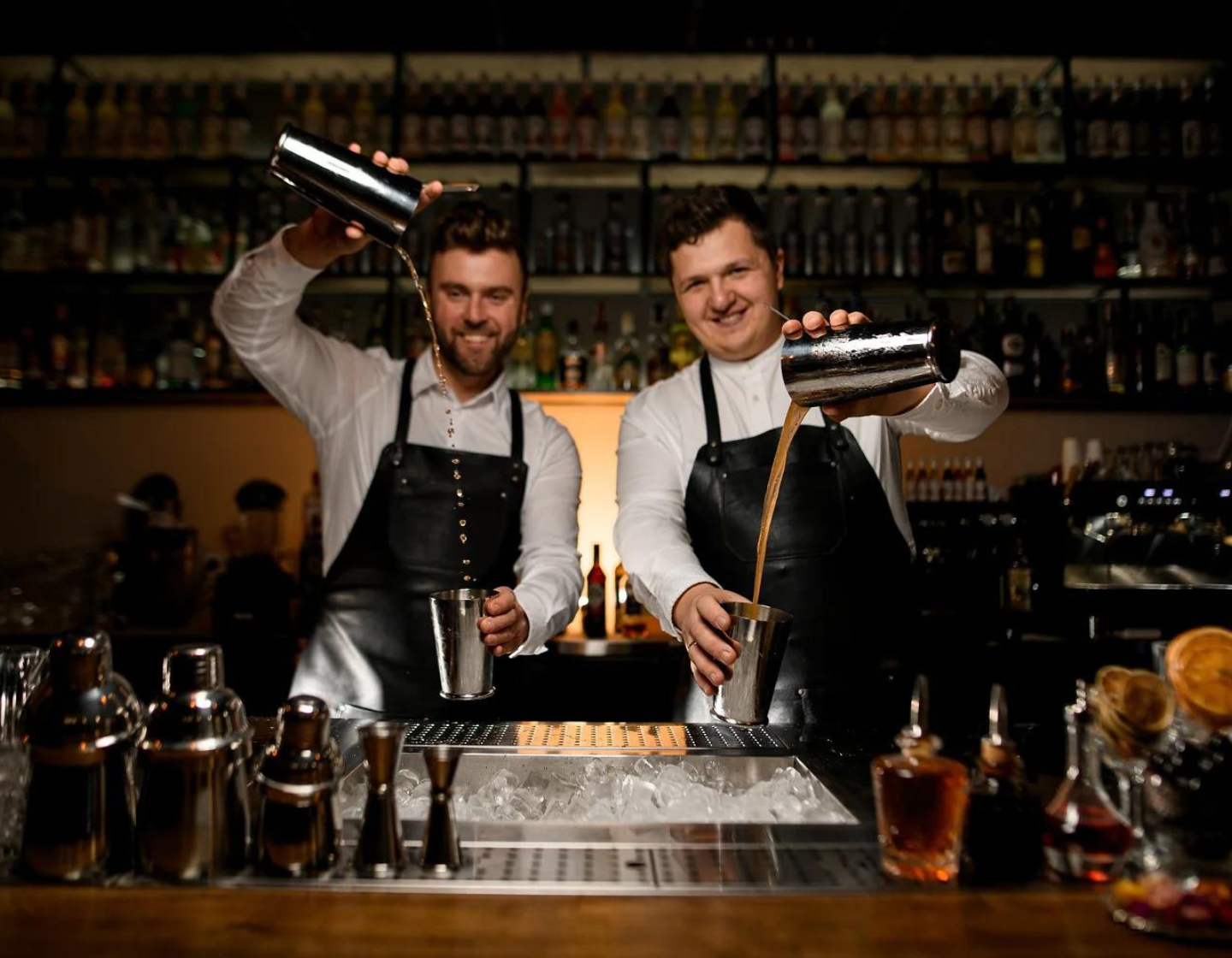Bar Skills: Cocktail Bar Station Set Up
Learn how to design and manage a backbar that boosts efficiency in service and impresses your customers.
Estimated reading time: 6 minutes
Your backbar with its collection of alcoholic beverages, glassware and decorative elements, can be used as a powerful selling tool in your venue. By strategically designing and organising your backbar, you can enhance the overall customer experience, promote specific products and create a display that encourages guests to try new drinks.
Think about these stats...
- 1 out of every 3 customers do not know what to order when entering a bar.
- 2 in 3 default to beer and wine, uninspired by spirits.
People are highly visual beings and the visual appeal of the backbar can significantly impact their choices and experiences in a venue. The arrangement, presentation and visibility of products can play a key role in sparking a customer's interest and influencing what they order.

Optimising Your Portfolio Range
A good back bar is like any good sports team – it takes a varied bunch to get the best results.
Of course, you’ll need the ‘big hitters’ or ‘goal scorers’ up front to win you points, but there’s always a need for ‘interesting’ characters in outfield or on the bench, to balance and add a bit of soul to the collection. For any type of back bar, from large, sprawling, high volume bars, to bars with short or non-existent back bars, it’s imperative to first consider optimising your portfolio range. This heightens efficiency and profits by determining if you have got the right range for your bar.
By defining a clear range strategy, you also minimise potential gaps in your sales. That’s right, a ‘range strategy’. In doing so, you minimise loss, the potential to run out of stock, as well as overstocking on products you do not need. A good range strategy also prevents choice paralysis for your guests.
Setting Up the Back Bar
Here is an example of how you can categorise your stock and establish your own purchasing strategy (or range). This process requires you to work with suppliers and helps you define frequency of purchase.
We start with the three clusters of product range: Pouring, Upsell and Excite.
Pouring (Must-Stock)
Basically, these are the ‘house pouring’ brands used when consumers ask for well-known drinks, but do not specify a preferred brand, for example, 'gin and tonic, please'. By using recognised brands, you ensure the quality of your offering.
Merchandising tip for the backbar: Two options for the backbar: Double up, with two rows of the must-stock bottles and place them on the lower shelf. Pour brands also need to be at the speed rails in your bartender’s workstation. This helps to keep everything at hand, especially for peak hours, ensuring your staff to perform at their best.
Upsell (Core)
Best-selling premium spirits offer a better drinking experience for celebratory moments. Make sure to identify the categories and brands where having a premium liquid is essential for your business.
Merchandising tip for the backbar: Again you can double up on these and and put the product in two different locations, but this time you want to place these on the premium shelf at eye level or slightly higher. And use lighting to make these bottles stand out. Staff should be trained to upsell these brands whenever the opportunity arises.
Excite
Finally, stay on top of new trends and ensure familiar or local brands are also available. Do some research about what’s popular in other places or create your own trend. Ask your suppliers for their support on this topic.
Merchandising tip for Backbar: Display above the premium shelf, above eye level. Use lighting to draw attention to these products. Staff should be trained to talk about these brands whenever opportunity arises. Note: Shelves higher than the third level will largely be ornamental, as the bottles there will be difficult to reach and not practical for daily usage.
As for those brands your customers know by heart, make sure you have a reasonable stock of them. You do not want your customer to leave your venue in search of their favourite brand.

Inspire Your Customers
Now that you have identified a clear role for every product in your range, ask this question: Is your bar designed to inspire your customer to choose what you want them to choose in order to drive your business? Here are three suggestions to help inspire customers:
- Champion one category: Use plinths, specialised menus, and distinctive glassware to really add focus to one category.
- Bring the backbar to the front bar: Use cocktail tools, fresh fruits, decorative ice, to create workstations that inspire.
- Differentiate your offering with seasonal and signature serves: Offer the right serve for the right occasion.
Finally, this is not an exact science. Try out what feels best for your venue, your space, your customers. Measure and learn. Identify what is working and what is not – don’t be afraid to tie in other elements from your bar, like the menu. Ask your staff or colleagues for different perspectives on the challenge at hand.
Key Takeaways
- Define a clear portfolio range strategy – don’t over or under stock.
- Categorise your back bar spirits into 3 areas – Pouring (Must-Stock), Upsell (Core) and Excite.
- Champion one category in your bar by using specialised menus and distinctive glassware.
- Inspire your customers by bringing cocktail tools, fresh fruits, and garnish to the front of the bar.
- Offer seasonal and signature serves throughout the year.
Empower your team to keep up with industry trends, learn from the experts and discover invaluable resources for their bar career by encouraging them to sign up to the Diageo Bar Academy for free.
